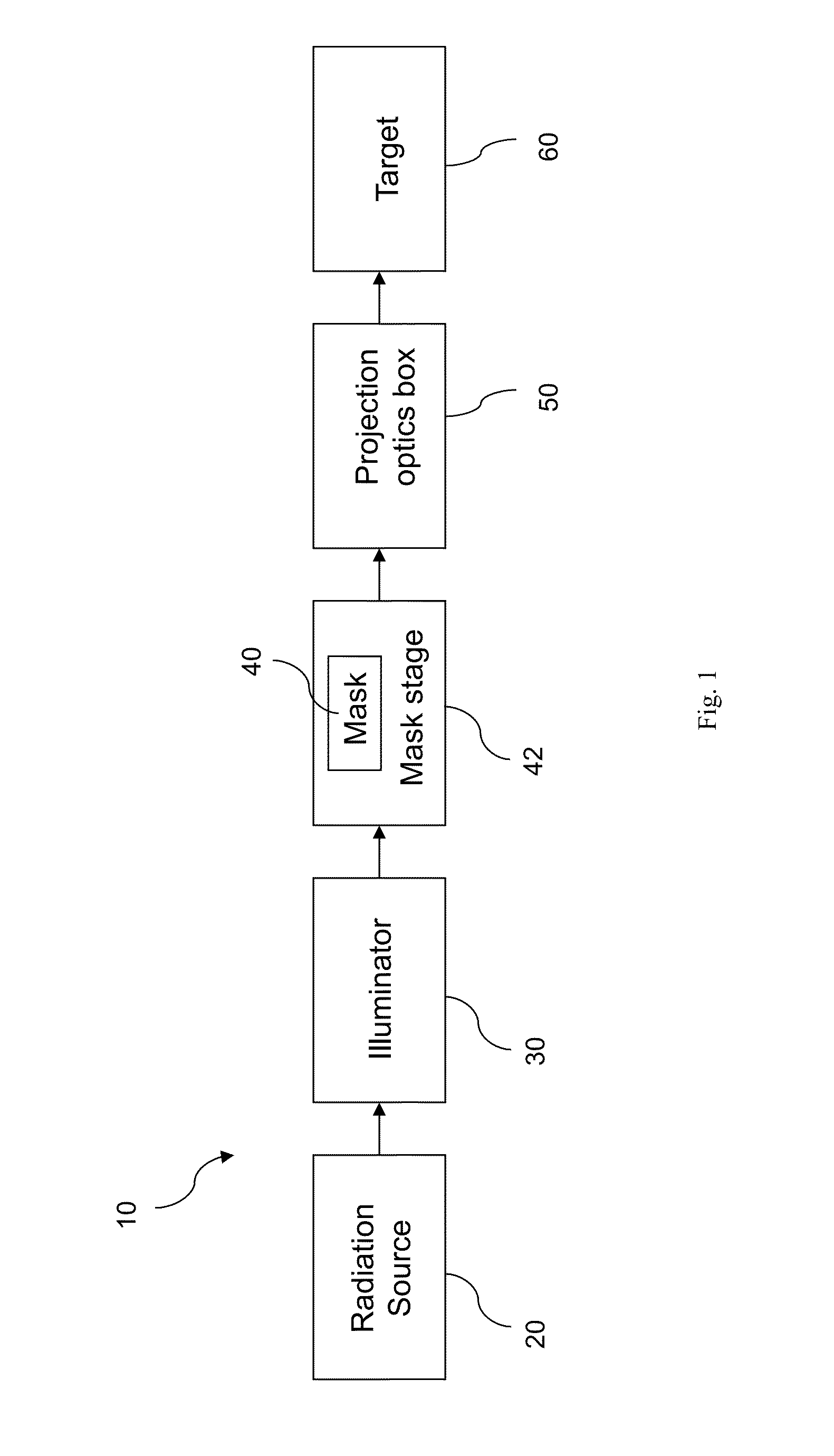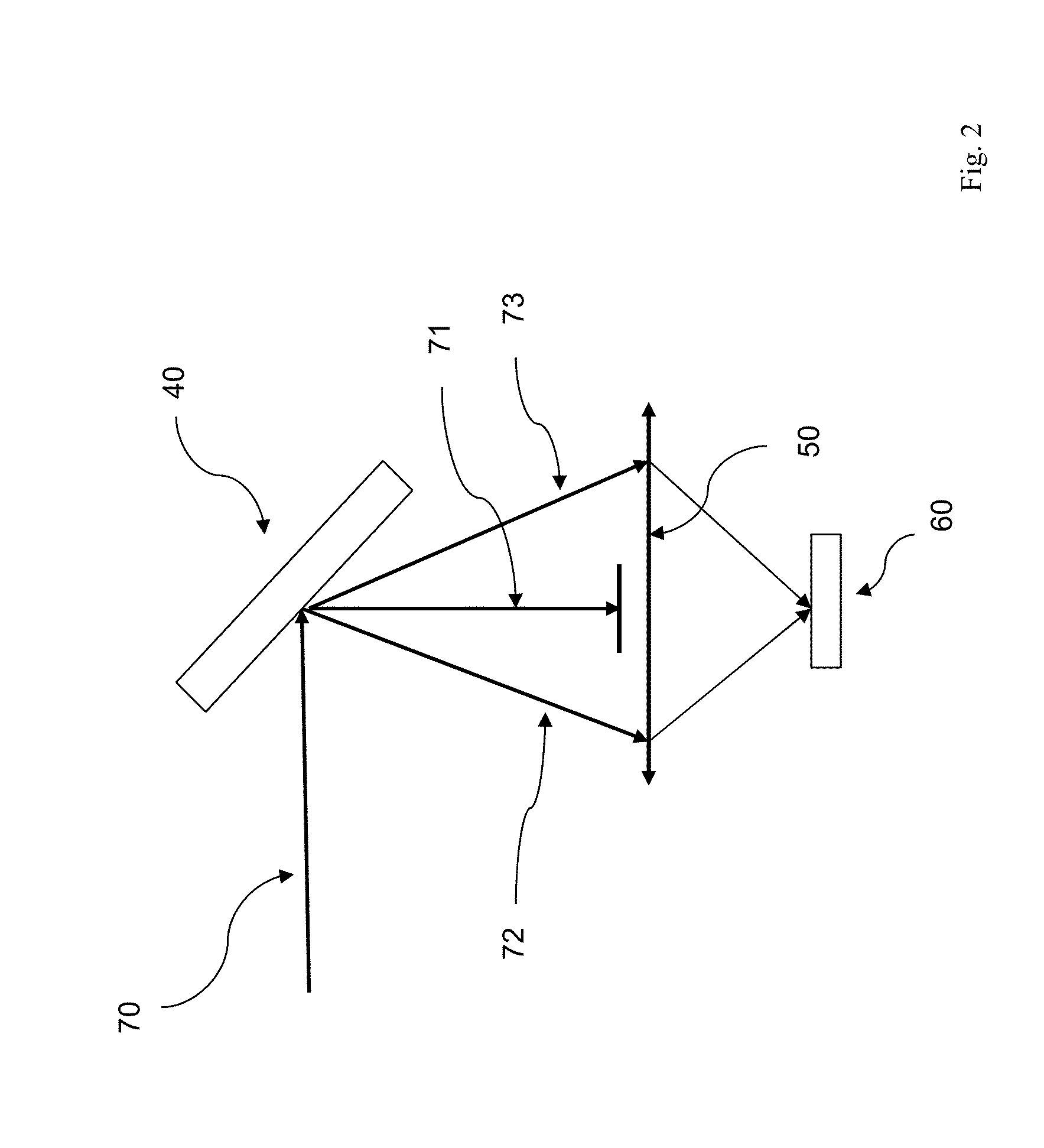Extreme Ultraviolet Lithography Process and Mask with Reduced Shadow Effect and Enhanced Intensity
a technology of ultraviolet light and enhanced intensity, applied in the field of electromagnetic interference circuits, can solve the problems of increasing the complexity of ic processing and manufacturing, large transition area between phase shifts, and the need to overcome each technique's limitation
- Summary
- Abstract
- Description
- Claims
- Application Information
AI Technical Summary
Benefits of technology
Problems solved by technology
Method used
Image
Examples
first embodiment
[0030]In the first embodiment, the second reflective layer 150 includes single molybdenum (Mo) film 151 with a thickness of about 44 nm, as illustrated in FIG. 4. According to the reason mentioned in the previous section, this should be the thinnest design of the second reflective layer if Mo is used. In this embodiment, the reflection coefficient is about −0.7757 and the reflectivity is about 0.6017.
[0031]In the second embodiment, the second reflective layer 150 includes multiple films, as illustrated in FIG. 5 as a cross-sectional view. Particularly, the second reflective layer 150 includes five Mo films 152, 153, 154, 155, and 156 as well as five Si films 162, 163, 164, 165, and 166 configured such that two adjacent Mo films sandwich a Si film and two adjacent Si films sandwich a Mo film. In the present embodiment, the Mo film 152 has a thickness of about 1 nm; the Mo films 153, 154, 155, and 156 have a same thickness of about 10.1 nm; the Si film 162 has a thickness of about 4 n...
second embodiment
[0032]In either the first or second embodiment, each of the thickness is within 20% of its respective nominal value. State differently, each thickness is in a range from 80% to 120% of its respective nominal value.
[0033]The buffer layer 172 is similar to the buffer layer 130. For example, the buffer layer 172 includes a Ru film. In furtherance of the example, the buffer layer 172 includes a Ru film with a thickness ranging from about 2 nm to about 5 nm. In other examples, the buffer layer 172 may include Ru compounds such as ruthenium boron (RuB), ruthenium silicon (RuSi), chromium (Cr), Cr oxide, or Cr nitride.
[0034]Referring back to FIG. 3, one or more of the layers 105, 120, 130, and 150 (such as 151 in FIG. 1 or 152-170 in FIG. 5) may be formed by various methods, including physical vapor deposition (PVD) process such as evaporation and DC magnetron sputtering, a plating process such as electrode-less plating or electroplating, a chemical vapor deposition (CVD) process such as a...
PUM
| Property | Measurement | Unit |
|---|---|---|
| thickness | aaaaa | aaaaa |
| thickness | aaaaa | aaaaa |
| thickness | aaaaa | aaaaa |
Abstract
Description
Claims
Application Information
 Login to View More
Login to View More - R&D
- Intellectual Property
- Life Sciences
- Materials
- Tech Scout
- Unparalleled Data Quality
- Higher Quality Content
- 60% Fewer Hallucinations
Browse by: Latest US Patents, China's latest patents, Technical Efficacy Thesaurus, Application Domain, Technology Topic, Popular Technical Reports.
© 2025 PatSnap. All rights reserved.Legal|Privacy policy|Modern Slavery Act Transparency Statement|Sitemap|About US| Contact US: help@patsnap.com



